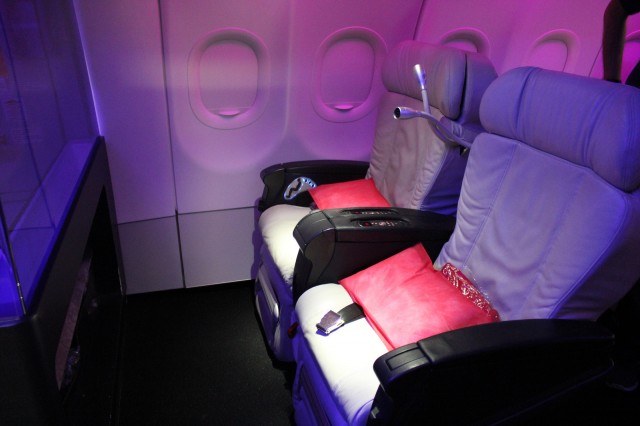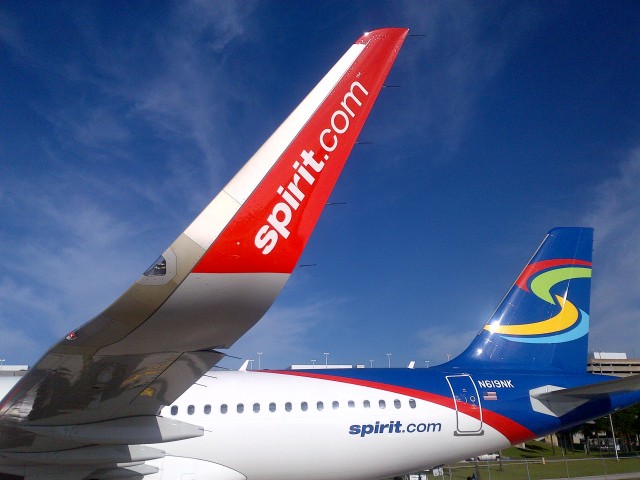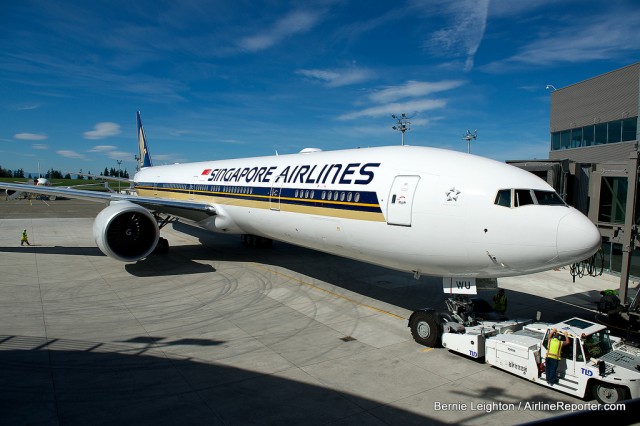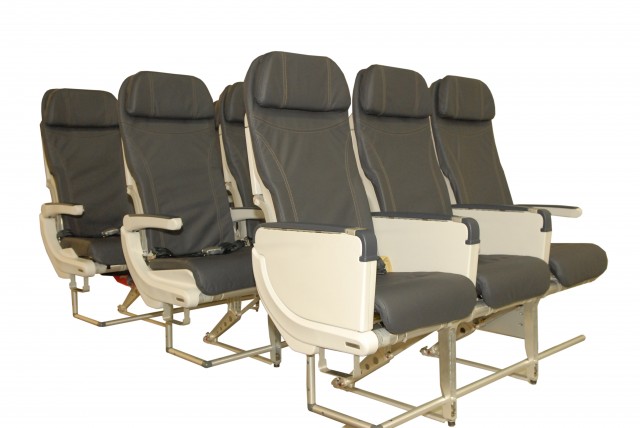It makes sense. Do not get me wrong, this is true – but even then I knew it was a gross over-complication. It only really made sense in the premium cabin, where passengers made their airline selection on a factor other than pricing. Airlines don’t actually deal in seats; a seat is kind of a nebulous thing that cannot be quantified easily.
Airlines deal in unit cost and unit revenue. You’ve all probably heard the term CASM (Cost per available seat mile) thrown around, same with RASM (Revenue per available seat mile). Well, when you buy a seat, you are buying capacity on the flight at a specific fare.
It gets worse, because the available seat mile is extremely perishable. It’s gone, forever, once you close the door. There are a good deal of complex price discrimination strategies employed by airlines to ensure that their customers never pay less than they ought to – but before I hurt your heads with complex math and graphs, allow me to completely change the tone of my argument.
Gordon Bethune (the best CEO Continental Airlines ever had) once said, “You can make a pizza so cheap that no one wants to eat it.” I was naive – I thought that was true. It turns out Gordon was wrong, and not just with airlines.
Spirit Airlines was right in stating that their target market is the “hate flyer” because that’s what many passengers have become. The hate flyer has decided that they despise flying, the airport experience, and have resigned themselves to the belief that flying in economy class will be so miserable, they do not want to pay even a penny more for the displeasure than necessary.
Stepping back for a moment, why do we even have a situation where (in economy class) the price has become the product? As high as the barriers to entry are for the airline market, and as high as the operating costs are, the airline business operates in an almost idealistically-perfect competition situation. The customer knows exactly what they are going to get and they can see thousands of price options in seconds.
Consumers can see what they will get, what food they can buy on board, etc. Sure, they’ve found airlines are all the same, but that is probably just a case of Hotelling’s rule. In a case of businesses selling the same thing in an environment with intense competition and informed consumers, there is an incentive for every business to offer the exact same options.
Sites like Expedia, Travelocity, and Hotwire have ensured that customers can prove even more that the price is now the product.
If you have three options on four airlines to fly from A to B and only fly once a year, with no loyalty or pressing need, all you would care about is the price (and maybe schedule, but likely as a secondary consideration).
That’d be fine, if the only passengers in the world that didn’t care about nebulous concepts like product and service were the infrequent flyers – we wouldn’t be in a situation where cabins are getting denser, seat-backs are not reclining, and food is buy-on-board.

First class still exists on many domestic airlines, but most people are not willing to pay for it. Premium product is seen here on Virgin America – Photo: David Parker Brown | AirlineReporter
The thing is that businesses have, for right or wrong, started adhering to the concept of “everything only exists for the point of maximizing shareholder value” so hard that they’ve changed the way their “human capital” is allowed to fly.
This is bad news for airlines; everything outside of leisure routing is done for the mythical business traveler. Even though the market segmentation is now vastly more complicated than that, the gist of it is that the business traveler wants options; they would fly another airline if they had another flight fifteen minutes earlier. Worse, they’d pay them way more. Worse still, they’d pay them even more for the ability to add some flexibility to his fare rule.
That worked when companies had travel accounts and were loyal in establishing relationships with airlines and their employees.
BONUS: The Five Stages of Flying an Ultra Low Cost Carrier (Epic Comic Style)
Now, even major corporations demand that their employees select the deepest discount, inflexible (sometimes even non-upgradable) economy fare. They do not care that their employee is a million miler with legacy B – they have to go Southwest! It’s two dollars cheaper — their travel tool demands it!
It’s a zero-tolerance, classically-benign technocratic tyranny. The company saved two dollars! Why if they saved two dollars for every travel booking, they could make n dollars more profit per interval! Don’t get me wrong, greed can be good- but loyalty is a two-way street. Companies used to treat their employees as more than a liability.
This is terrible for those in the airline business, though. If they can’t depend on loyal, high-bucket, economy flyers traveling on business, they can’t depend on anyone to pay for anything. So why bother?
There are some airlines that do bother. Etihad (which is 10Y, but service focused), Singapore, Qatar – they are bucking the trend and instead of making Economy economy “minus” and adding a premium economy (or as I call it, Economy class from the 1990s). They value their economy customers and offer value for money – and can charge a premium for it. It is no wonder that these airlines with a differentiated product are meeting their key performance indications in entirely different ways than the rest of the pack.
What is the point of offering more than the basic economy “minus” product with no shoulder room? No one is going to pay for more legroom any more. Everyone says they’d pay for it, but then a mitigating factor comes up. Once that happens, it’s back to Travelocity and the little gnome telling them they could save three dollars if they took a two-stop connection on the competition!
Airlines are not in the business of necessarily making you happy- they are there to get you from point A to B without killing you, maiming you, or otherwise rendering you incapacitated. They are there to ensure your safety on the journey. That’s it – everything else is just gravy. You have to pay for gravy.
If you want to have an economy experience that isn’t an eleven-across A380 (something my professors told me I was sadistic for arguing in favor of, but now could be a reality), show us. If that wasn’t enough, airlines asked Airbus to match the 189 seat capacity of the 737-800 on their A320. How are they doing this? By making all the aft economy rows at 28-inch pitch. Much like the ten-abreast A350s coming to an airline near you soon, these were not Airbus’ idea. Don’t complain, then pay us nothing for nothing. Vote with your dollars. If you knew their metrics, you’d understand why they think you’re asking the moon and complaining you got green cheese.
You want economy class to not be terrible? Then you need to pay for it. You want to save five dollars? Well, airlines still have to make money. Why is it okay in every other business to deliver exactly what they say they do on the package, but we have to go above and beyond? Those businesses are higher margin, too.
So in conclusion… businesses, stop making your high-value employee travelers hate themselves (and then complain to us about changes in frequent flyer programs and economy class). Everyone else, think really hard about what actually matters to you.
Airlines have to make money, and you are the source. At the same time, there are some airlines that call these serious downgrades in economy class product “enhancements”. To the point where “enhancement” is a dirty word among frequent flyers.
Airlines, just be honest – don’t ever say some new super-slimline seat with no padding, less knee room, and slide-forward recline is more comfortable, or is being fitted on a plane for environmental reasons. Call it like it is – the illusion of service and comfort in economy is gone.
You get what you pay for.
Why does that surprise you at all?
![Photo and Press Release from Boeing... SEATTLE, Feb. 11, 2014 /PRNewswire/ -- Boeing's [NYSE: BA] passenger-inspired 737 Boeing Sky Interior marked its 1,000th milestone delivery with Norwegian Air Shuttle ASA. The 737 Boeing Sky Interior features modern sculpted sidewalls and window reveals, LED lighting that enhances the sense of spaciousness and larger pivoting overhead stowage bins. "The Boeing Sky Interior is delighting passengers and our airline customers," said Beverly Wyse, vice president and general manager, 737 program, Boeing Commercial Airplanes. "It's adding even more value to the Next-Generation 737, which already delivers the best economics, reliability and fuel efficiency in its class." Norwegian Air Shuttle was one of the launch customers for the 737 Boeing Sky Interior. This is the airline's 48th Next-Generation 737-800 with the new interior, making it the largest airline operating with the 737 Boeing Sky Interior in Europe. "Our goal is to provide passengers with the ultimate experience in comfort and convenience when they fly with Norwegian," said Bjorn Kjos, chief executive officer of Norwegian Air Shuttle. "The Boeing Sky Interior on the Next-Generation 737 helps us to deliver just that." A passenger survey conducted by Norwegian Air Shuttle soon after the airline began service with the new look found that more than half of respondents rate the 737 Boeing Sky Interior more comfortable than the standard interior. And passengers reported they feel "happier" in the new interior. Since the first 737 Boeing Sky Interior was delivered in October 2010, more than 60 customers have ordered the new interior. Approximately 85 percent of Boeing's backlog of more than 1,900 Next-Generation 737s will be delivered with the 737 Boeing Sky Interior. The passenger-preferred interior will be standard on Boeing's newest family of single-aisle airplanes, the 737 MAX.](https://www.airlinereporter.com/wp-content/uploads/2014/02/Norwegian_BSI-640x427.jpg)



I agree with the article for the most part, but for some of the detail – Etihad has also begun, at least on their B777s, having narrower seats (as have Emirates) at 10 abreast, leaving just 17 inches width per seat.
The airlines started this. Despite getting an identical product no two passengers pay the same amount. The pricing differences between two people sitting next to each other can be staggering. The airlines made it increasingly insane – things like one way tickets costing more than a round trip, or long out of the way two leg journeys being cheaper than a shorter one leg. They took pricing to extremes. Is it any wonder that the customer response then was all about pricing?
For your specific plea, how exactly would a corporate set their rules? “You can pay more for a ticket if XXXX”. What is the XXXX? Seating density is close to identical, there is no food, bags aren’t included, the airport experience is no different etc. About the only XXXX is “business class” but even then the pricing difference can be huge (many multiples of economy seat).
I <3 a good Bernie Rant
I don’t see how Hoteling’s rule, which describes non-renewable resources (coal stockpiles, for example) growing at the rate of interest describes the homogenization of airline seats.
Sorry. It’s supposed to be a statement about the price of the resource.
Great article Bernie, I agree with you on your perspective!!!!
To illustrate the point, consider the flight I was on two days ago from DCA to DFW on AA. It was a later flight (8:15 PM departure) on a 738. 40-50% full at most.
First was full…and the back was 2/3 to 3/4 full. But there was not a single person in the Economy Plus (Main Cabin Extra) section. First four rows full…last 15 mostly full. The nine in between? No one. Not one person in the back volunteered to pay $50 to move up.
Part of the issue I see is that the airlines price those seats a bit high. But second, people don’t understand easily that they can buy it. If at departure the flight attendants came through and said, we have aisle seats with no one in the center in the economy plus section, they could sell them. They aren’t interested in doing so.
The airline could possibly make more revenue by adding a little to the service in EP. Say, cookies or one free drink. Make a true class of service difference instead of just a little more room.
Great article & spot on. If fare price is all you care about then cheap, crappy flights are what you’ll get.
Step back & check the big picture: Is saving $100-$300 so important if you lose more time sitting in airports or travelling out of your way only to arrive grumpy & pissed off?
Depending on the equipment, it costs US carriers approximately $35/seat/flight hour.
Price coach tickets at twice that rate and a well managed airline can easily-and profitably- provide standardized fares and 40 inch pitch seating along with a hot meal and beverage.
If done properly, employees could also be provided with pay raises of at least 5% for their efforts as well.
I for one would be glad to pay $70 per flight hour and enjoy such a domestic US flight.
Any smart senior managers out there capable of making this happen and putting our airline industry back on top?
GREED GREED GREED
again all i can say is greed let the ceo of the airline fly coach and see what he our she says at some point you the airlines will lose why because for now it is about today and not tomorrow and soon enough the gov. will get enough complaints that they will re regulate you all because ur stupid and dont pay attention and you will lose a good thing cuz of GREED
I hear California just voted in a “Bullet Train” to be constructed from San Francisco to Los Angeles.
http://www.dailynews.com/general-news/20140719/funding-deal-fuels-interest-in-california-bullet-train
I wonder if the airlines are paying attention to this. After all is said and done we will see how this train travel effects business travel in Cali.